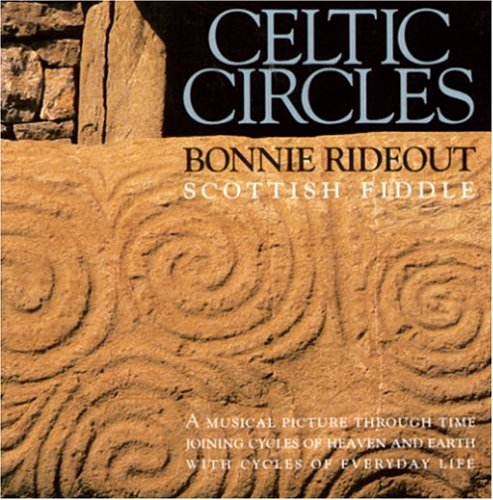 Alistair Brown penned this review.
Alistair Brown penned this review.
Bonnie Rideout has been reviewed in these pages before. At that time, reviewer Stephen Hunt described her compilation album Scottish Reflections, her ninth on the Maggie’s Music label, as “brilliantly conceived.” Celtic Circles, issued in 1994 and her second solo recording, illustrates how consistently high her standards of musicianship, research, and arrangement have been from the beginnings of her recording career.
I know it’s silly to describe a cd as “a listening record,” but this is one recording that demands to be savoured as a piece. Exquisitely evocative collections such as this (William Jackson’s Wellpark Suite and A Scottish Island come to mind) demand that the listener do just that. This collection of rarely-heard tunes is presented as a set piece, artfully arranged as an evocation of “a range of images which portrayed daily life,” and of Bonnie’s own memories of Scotland. In keeping with the theme of cyclical patterns of life, the music in Celtic Circles has been arranged according to time of day: dawn, noonday, evening, and night.
The cycle of life in the Scotland depicted here certainly rotates at a very measured pace. While the old tunes are drawn from various Scottish traditions — highland, Hebridean, Shetland, Cape Breton — this is very much an idealized composite image of Scottish life. To paraphrase another album title, magic and mystery abounds. There is an abundance of heather and shimmering lochans. A five point stag poses majestically on every mist-shrouded ben. But that is just the traditional rant you’ll hear from any Scots Presbyterian whenever we sense a danger of romanticism and emotion rearing their heads. If this is the image to be portrayed, then Celtic Circles paints the picture well.
Bonnie Rideout grew up playing the fiddle by ear, but has classical training as well. As she puts it, “the more I played ‘serious music’ the more I missed my fiddling,” and she returned to her roots. The result is an admirable feel for the old tunes, combined with remarkably disciplined technique (not to mention highly impressive research skills). Other instruments used to great effect on this recording are bodhran, viola, highland bagpipe, harp, viola da gamba, hammered dulcimer, small pipes, guitar and bass. These are used sparingly, layered (rather than lathered, as a friend would say), and develop nicely, varying the intensity of each piece appropriately. One gets the impression that, at any given moment in a set, the orchestration is exactly where it should be.
While the album is presented as a thematic arrangement — dawn breaks to two sets of measured drum beats marking the first sliver of golden light, and the gradual start of the day is depicted as a progression from air to march to jig — overall, the pace does not vary significantly from daybreak to bedtime. On paper, the logic is apparent: the evening, for example, is spent listening to poetry, doing some waulking, and having a bit of a hooley, while night brings “Aisling (A Dream).” You could, however, switch the times of day and tune sets around and it wouldn’t make a lot of difference to the overall mood. It doesn’t matter. At any given moment in this hour of music, I was happy where I was.
Musically, I cannot fault this recording. The airs are satisfyingly heartbreaking, the jigs are suitably perky, the rants stir the blood. Tune sets work well together. The playing is exquisite. Rich textures are created by the instrumental combinations. Taken as a whole, the album paints a pleasing, if rather nostalgic picture, to be enjoyed with a glass of expensive malt with a fancy label rather than a pint of heavy.
(Maggie’s Music, 1994)
